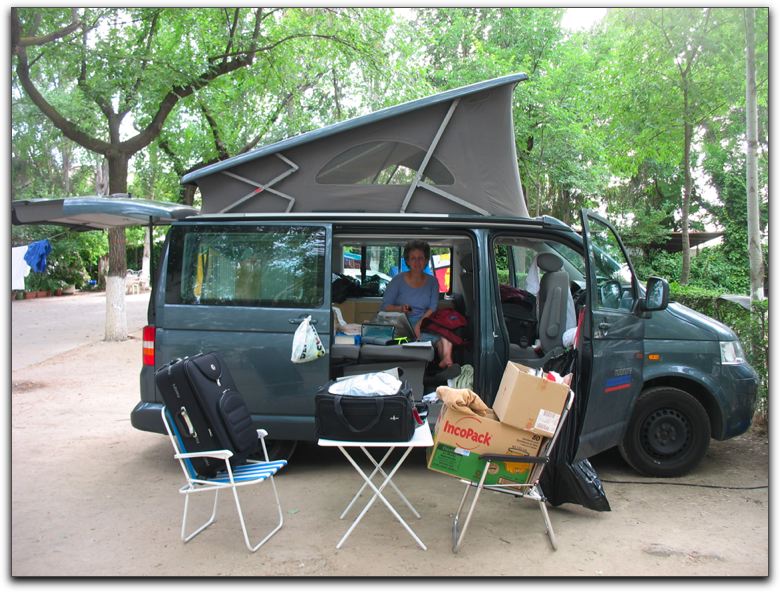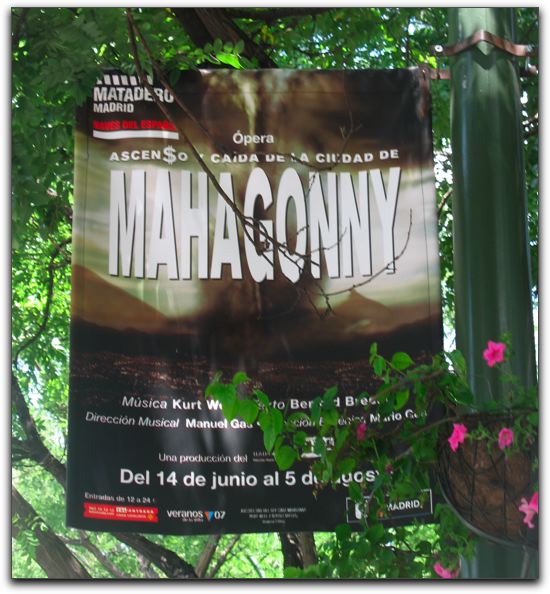
back to the big city.
We drove the van into town and parked near the main train station. We walked up to the Prado museum to see Velázquez paintings, especially Las Meninas… which is reproduced all over Spain. Also we enjoyed the two Maja paintings by Goya as well as his The Third of May 1808, and so much more. Certainly, not to be forgotten, Bosch’s Garden of Earthly Delights. Michener’s comments about the Prado helped focus our attention so that the museum was not overwhelming.
The tree-lined street in front of the Prado advertised a local production of Brecht and Weill's opera Mahagonny, which is best known for the Alabama Song (made famous in the US by The Doors). We had seen very little reference to Brecht and Weill in Spain… not as in Central and Eastern Europe on the previous trip.


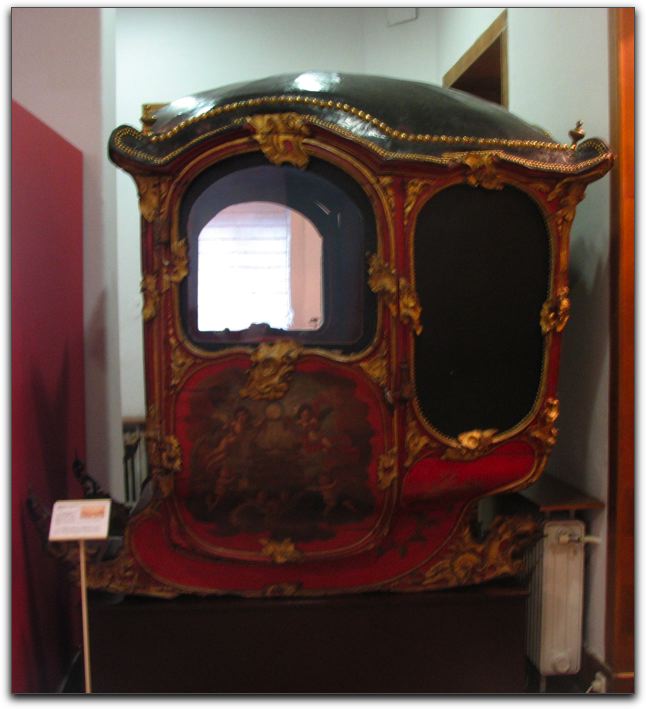
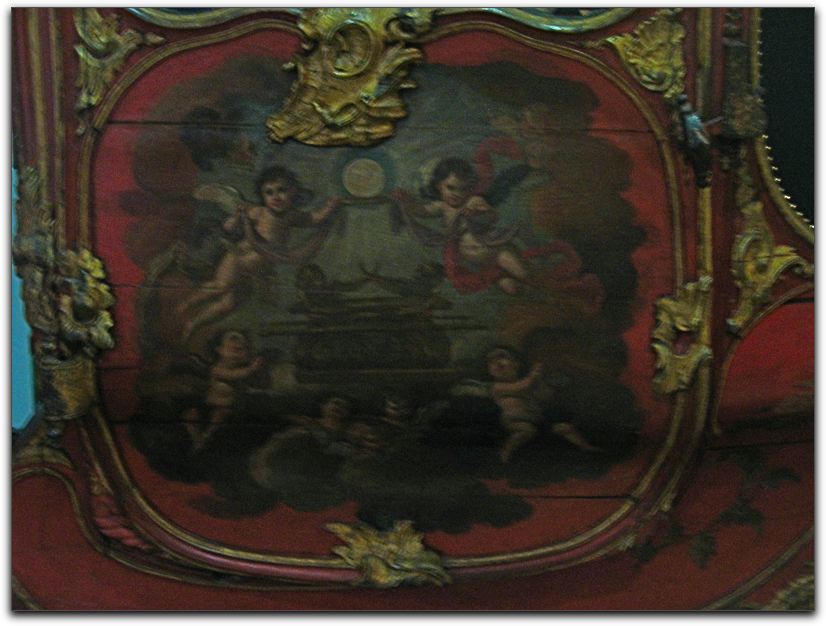
We then found a comfortable coffee shop to update the Web site before going to one of the local, small Conservative (Mesorti) congregations, Congregación Bet-El to welcome Shabbat. We took our photo in the Parque Del Buen Retiro.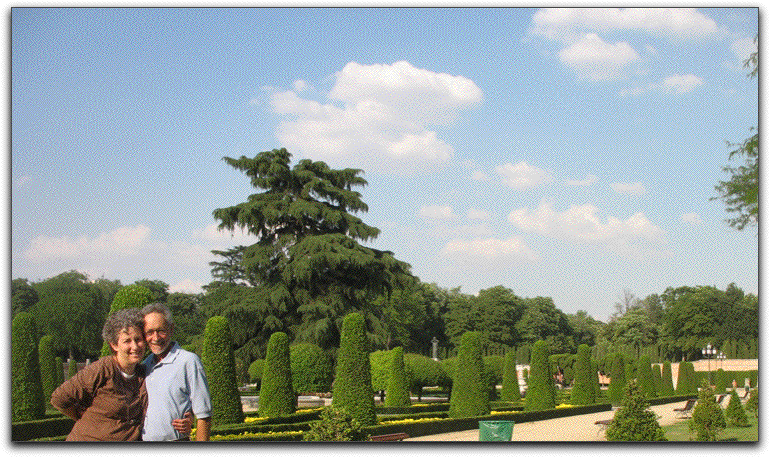
Once again, we drove into Madrid with the van, but this time to the Museo de América where we were able to park on the street (probably free, but we put money in the meter just to make sure).
We hoped to, but did not, find references to chocolate. The building had a beautiful ceiling slightly reminiscent of the work of a favorite sculptor.
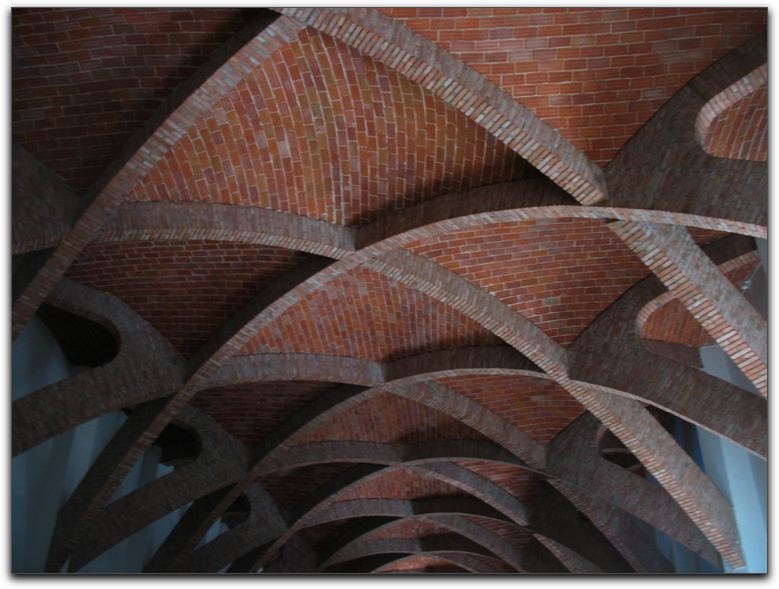
Wherever we go we see patterns. Most often patterns are closely repeating and symmetrical, as in the ceiling in the photo above. Mark was surprised and delighted to see that the patterns of certain Indians from the upper Amazon region of Peru seem to delight in non-repeating and non-symmetrical patterns (check the fine lines).


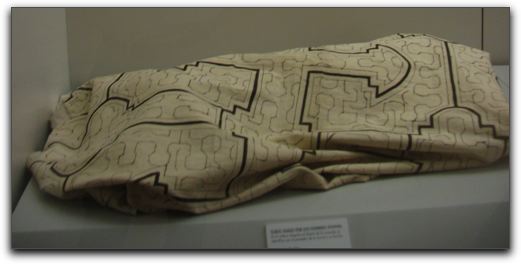
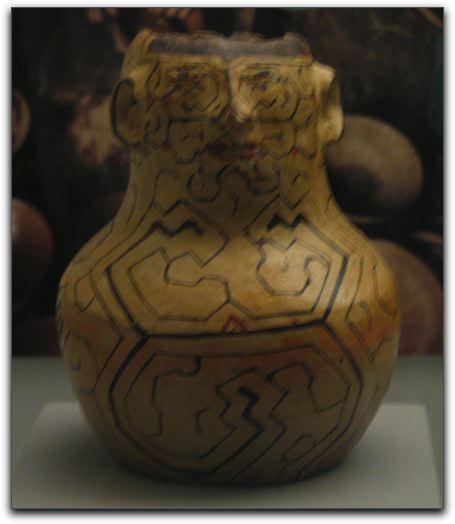
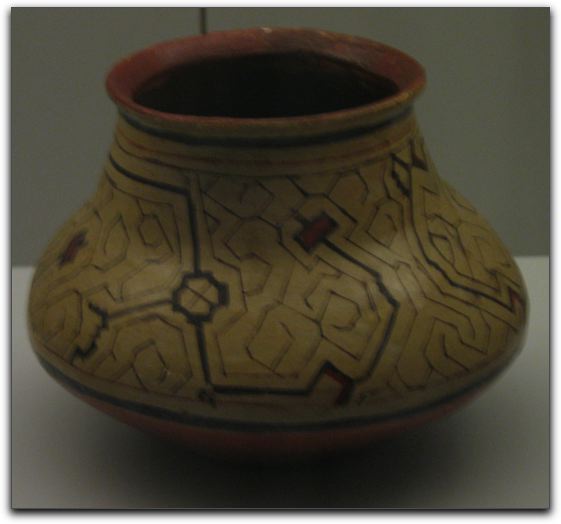
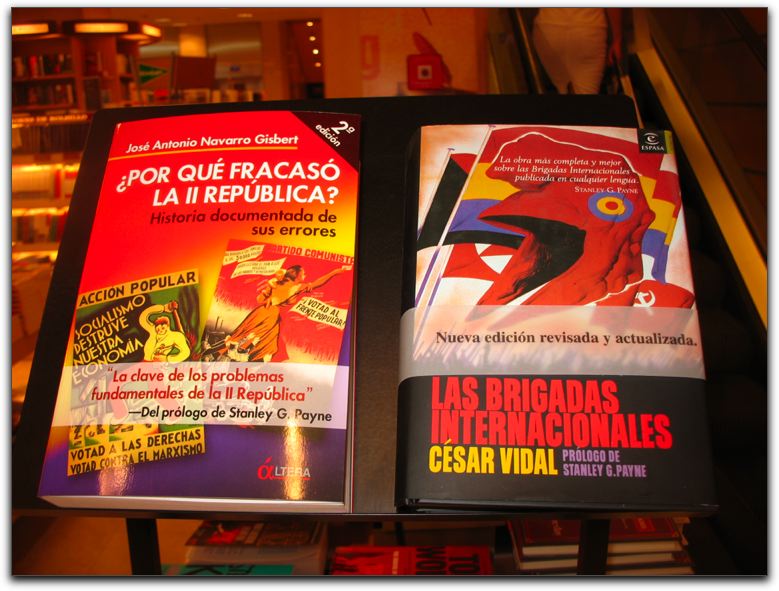
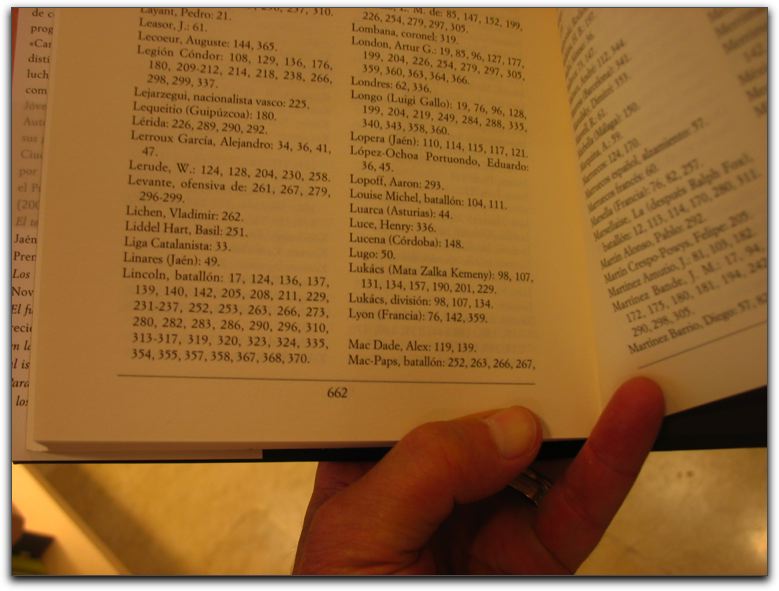
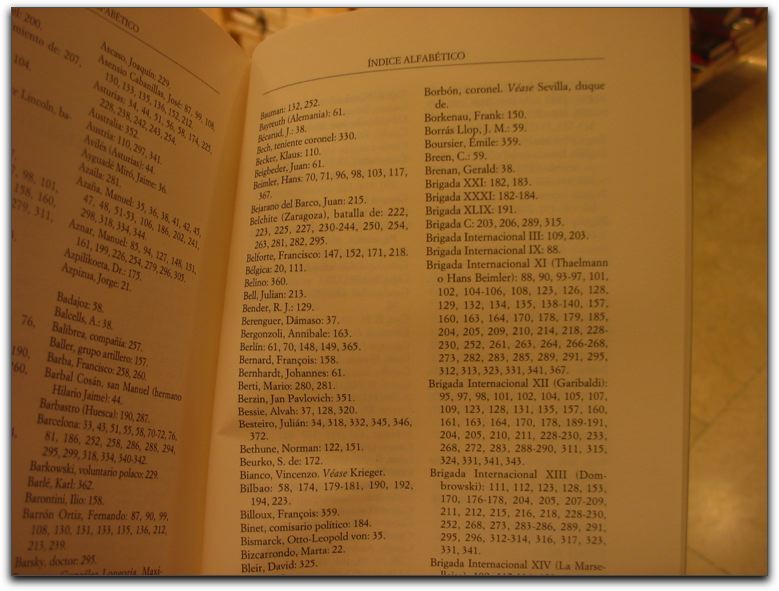
At the Biblioteca Nacional de España we quickly toured its tiny Museo, the only part that was open. We continued to the Thyssen-Bornemisza Museum of Art where we explored the regular collection and took a quick peek at the Richard Estes temporary exhibit. The highlight, the Van Gogh exhibit “The Last Landscapes,” features the last 73 paintings produced by Van Gogh in his last 73 days of life. We returned to our WiFi coffee shop of the previous day to catch up on more correspondence. Then back to our campsite by way of the Plaza de Colón
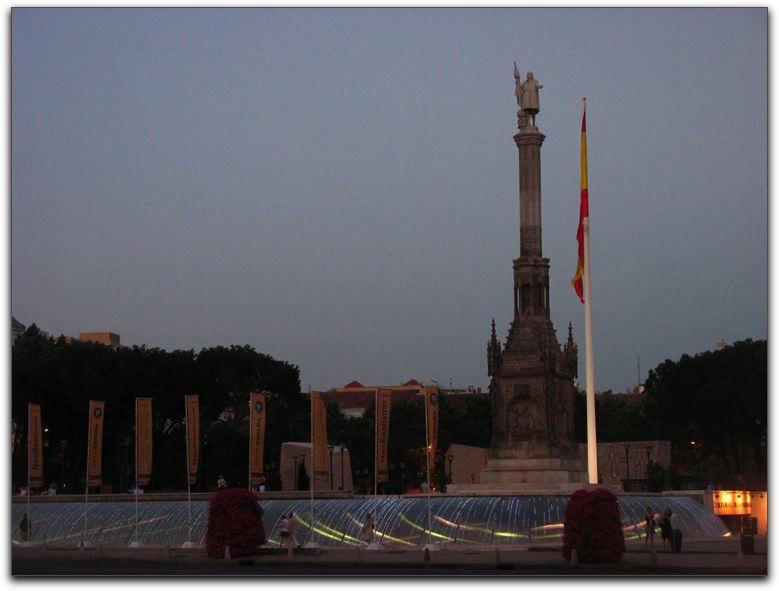
where we took our photo. Note (though, sadly, not visible in the photo) that the monument by Joaquín Vaquero Turcios here cites the date Columbus set sail from Spain on the first voyage—on August 3, 1492, which corresponds to the 9th of Av, the date of the Expulsion from Spain.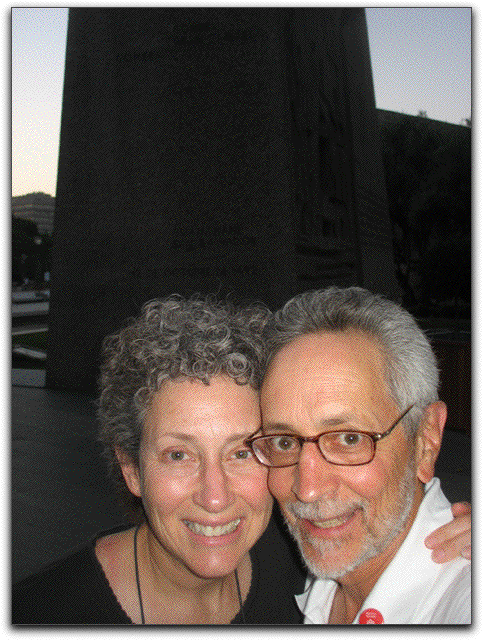
Our last full day in Spain and the end of our “road trip.”
Once more into town to quickly fit in some more sight seeing. First, to explore the “flea market”

which turned out to be imports from China and Guatemala. There were also numerous booths with actual second-hand and discarded merchandise. In one Mark found a special object.
Mark is a serious collector of Judaica lapel pins. However, even a cursory glance at these confirmed that none had any Judaic content.A Very Plane Inheritance
Mark's parents had collected art and artifacts that depicted the life of the working-class Jews of Eastern Europe. After Mark's father died, his mother arranged to give their art collection to the Magnes Museum in Berkeley, California. The artifacts remained in the family home until Faye Hurvitz moved to San Diego and brought those items to Mark. They became, in a sense, the yerushe or ירושׁה, their children's inheritance. Among those items were an abacus, an iron and a carpenter's plane.
So, Mark was pleased to find a similar plane among all the "stuff" for sale at the flea market.
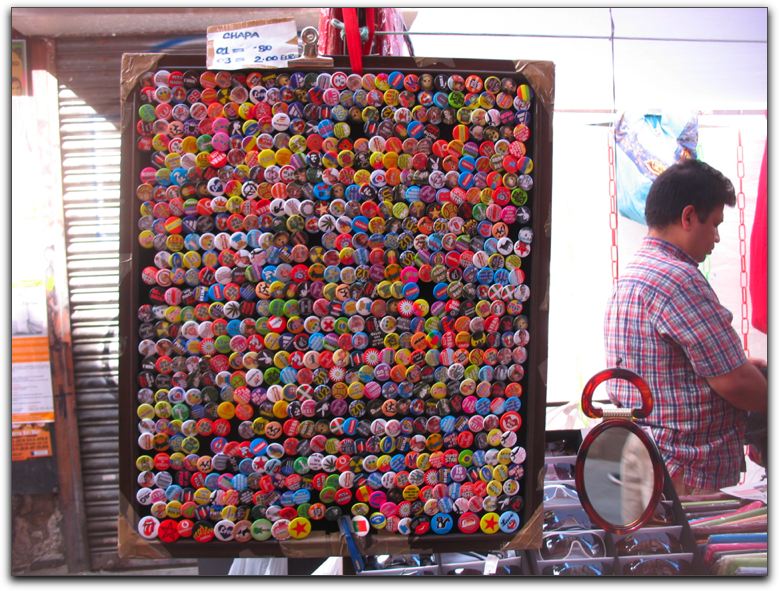
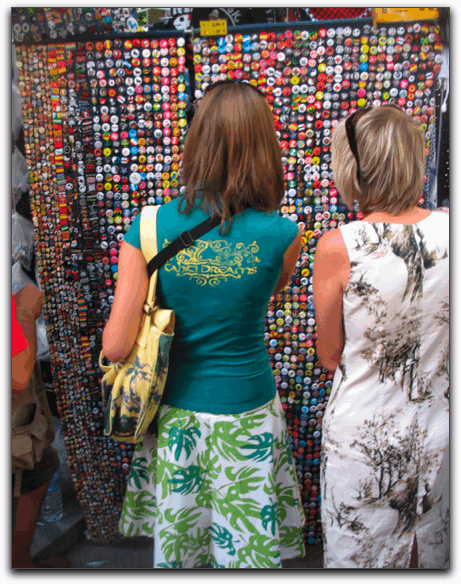

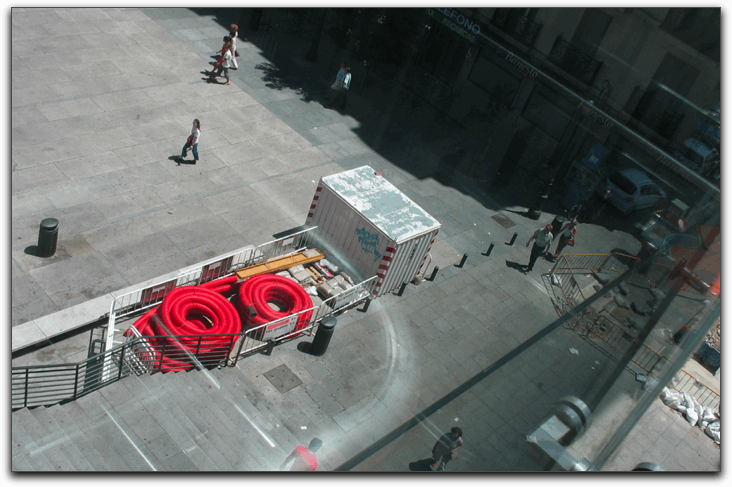
From the Reina Sofía by Metro back to the other side of town to the Royal Palace where we checked out the Royal Pharmacy for cocoa (unfound). Mark took another ceiling photograph.
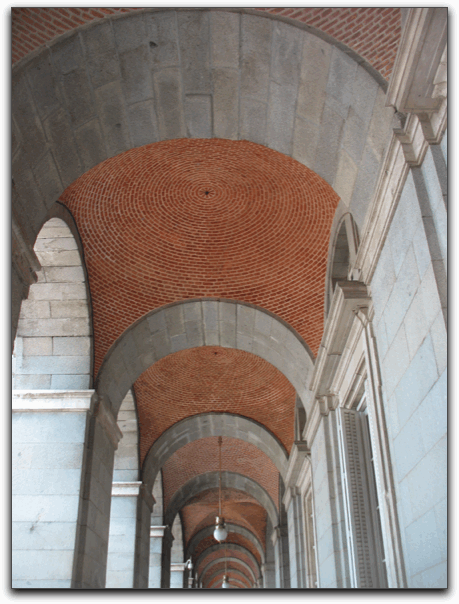
We paid our final "respects" to their most Catholic monarchs who's statues stood inside their palace:
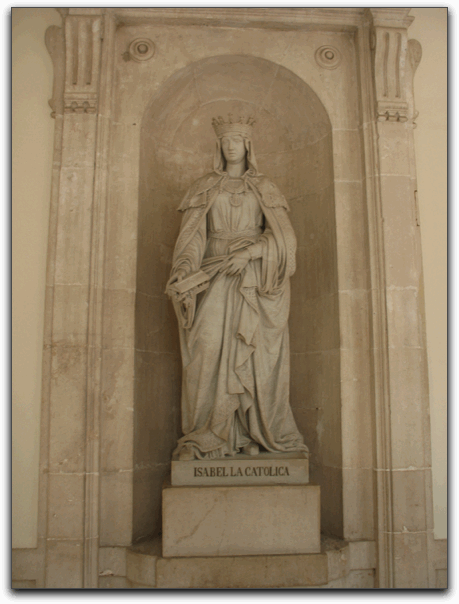
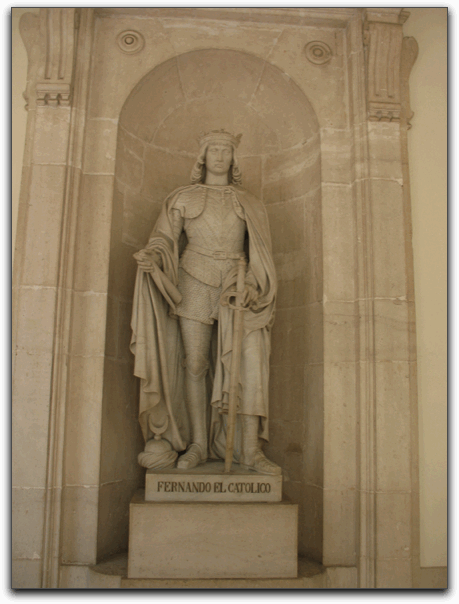
While at the Palace we took a final portrait of the Spain trip, which recalls the first portrait of the trip, also at the Royal Palace, different location.

We then made our way to the local Valor chocolate shop for a final cup of chocolate. Nearly every Valor shop has a ceramic tile mural with a scene of what appears to be a seventeenth century chocolate party.
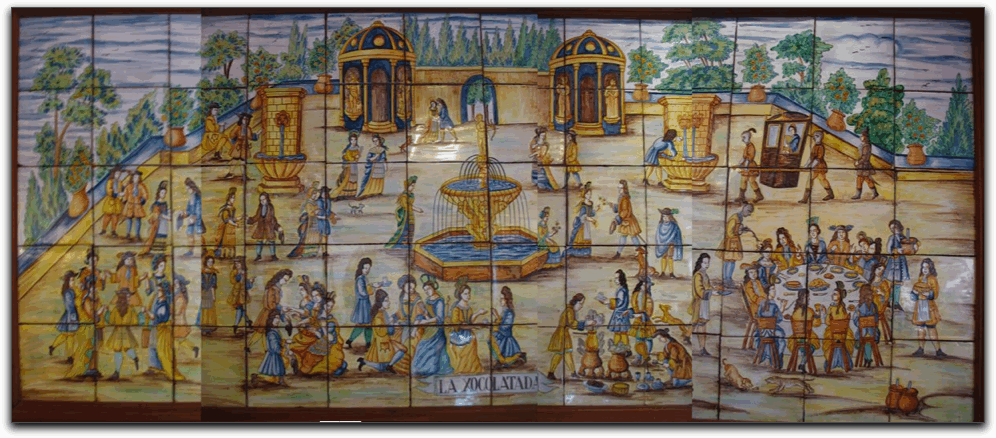
We purchased a mancerina for ourselves as a souvenir
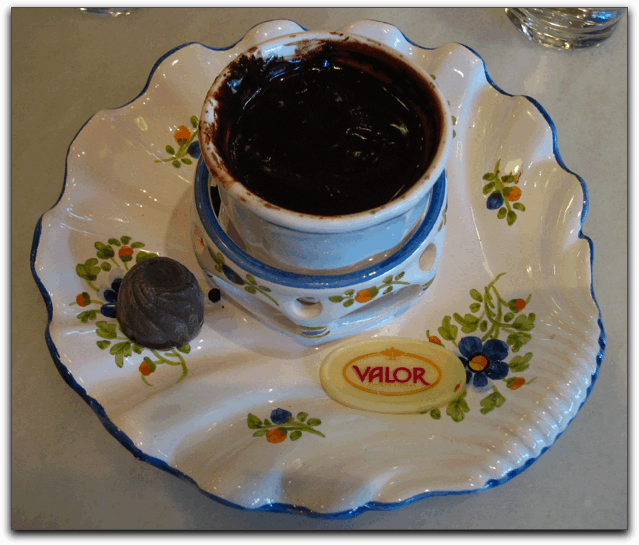
and returned to the van to pack up.
